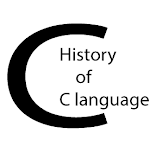Keywords of History of C
Dennis Ritchie: Dennis MacAlistair Ritchie (Born: September 9, 1941 – Died: October 12, 2011) was a computer scientist from the United States. He designed the C programming language, as well as the Unix operating system and the B programming language, with long-time collaborator Ken Thompson.
Bell Telephone Laboratories: Bell Laboratories, originally AT&T Bell Labs, Incorporation, by the names of Bell Labs, consisting of the American Telephone and Telegraph Company research and development arm Nokia Bell Labs (AT&T). This is now part of the Finnish corporation Nokia.
BCPL: BCPL abbreviation of "Basic Combined Programming Language" is a structured programming language. It was used to write others programming compiler. And it was designed by Martin Richards.
B: B is a programming language developed and invented at Bell Labs around 1969. It was developed by Ken Thompson and Dennis Ritchie and designed by Ken Thompson. This programming language was derived from BCPL.
Brian Kernighan: Brian Wilson Kernighan is a computer scientist and worked for the development of the Unix alongside Ken Thompson and Dennis Ritchie.
Portability: Portability of programming language refers to the attribute of the character of that programming language that can be used in all aspects including for the development of an operating system. It also refers to the usage in all environments.
ANSI: The American National Standards Institute (ANSI) is a private non-profit 102 years old organization and situated in Washington, D.C., USA.
History of C
Dennis Ritchie at Bell Telephone Laboratories, Incorporation invented C in the 1970s. This language is evolved from the two earlier languages, BCPL and B, which were also developed at Bell Laboratories. Until 1978, when Brian Kernighan and Ritchie published a definitive overview of the languages, C was primarily limited to use within Bell Laboratories. The Kernighan and Ritchie description is simply known as "K&R C."
Following the publication of the K&R explanation, computing professionals started to encourage the use of the languages, impressed by C's many attractive features. C had gained mainstream prominence by the mid-1980s. Various types of C compilers and interpreters had been written for computers of all sizes using this language. Also numerous commercial application programs. Furthermore, many commercial software applications that were initially written in other languages were rewritten in C to benefit from its efficiency and portability. Early commercial implementations of C varied slightly from Kernighan and Ritchie's initial description, resulting in few incompatibilities between the language's various implementations. These differences hampered the portability that the languages ought to have. As a result, the ANSI has produced a consistent description of the C programming language. Almost all commercial C compilers and interpreters nowadays follow the ANSI standard. All of them still have their own set of functions and instructions.
Resources: Wikipedia and Shaum's Book.
